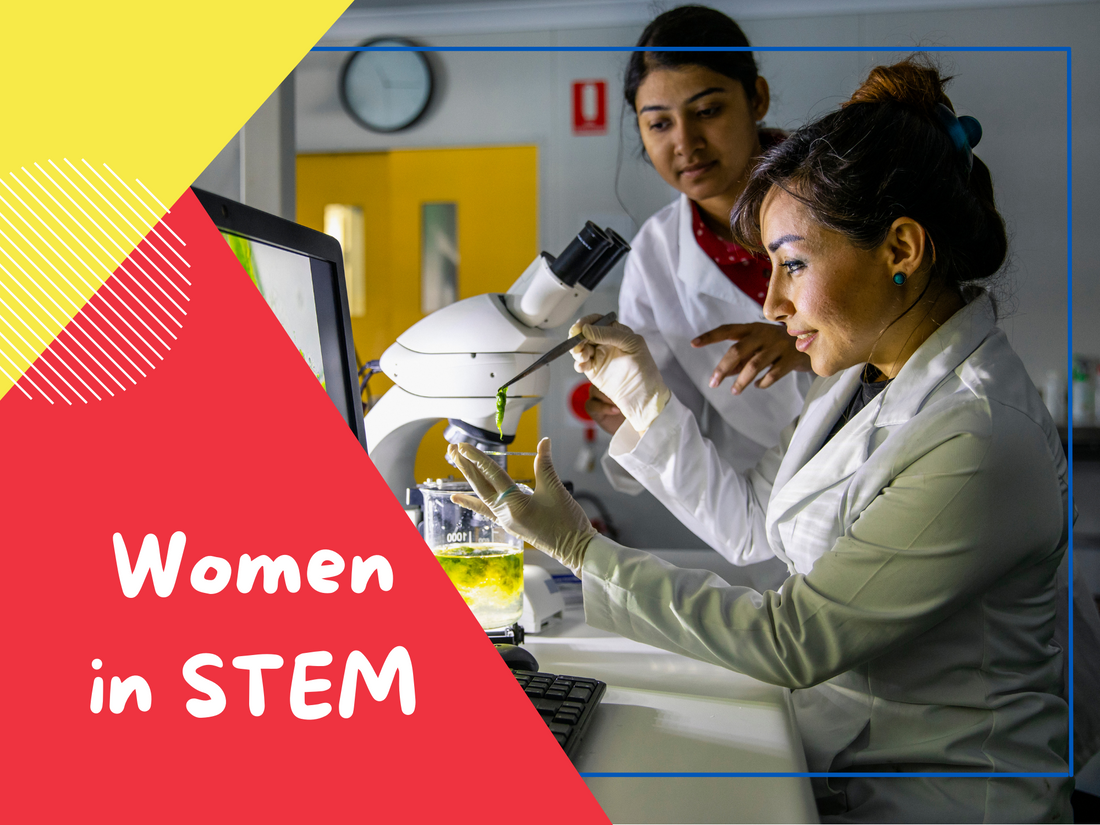Celebrating Women in Science and Math
My friend (born at the tail end of the baby boomers) is an electrical engineer. When I asked her why she decided to be an electrical engineer, she told me a tale remarkably foreign to my experience as a budding biochemist.
In high school, she took a career placement test. When her results returned engineer, all her friends told her she must have taken the test incorrectly. At that time, only men and genius women went into heavy STEM occupations.
“So,” She jokingly told me, “I decided to be an engineer to prove that dumb women can do the math.”

According to the United States Census Bureau, women made up 8% of the STEM workforce in 1970. In 2019, women made up 27% of the STEM workforce.
My friend taught me I can do it. My ability to succeed in STEM subjects is determined by how hard I work, not by my gender. I hope to pass this message on to other women.
In the US, obtaining education for women was a war, especially STEM education. Many believed only men could and should work in math and science. With time and dedicated leaders, the US changed this perspective. In many other countries, the fight is still raging.
In South Sudan, 73% of girls do not attend primary school. In Niger, only 17% of women are literate. In Guinea, on average women older than 25 have only a year of education. These horrific statistics go on and on in countries such as; Ethiopia, Liberia, and many more.
I am so grateful to the women who made it possible for me to pursue a STEM degree and to feel confident in my field. I long for the day that all women have equal access to education.
Today is the International Day of Women and Girls in Science. Although many women have contributed to our STEM knowledge, here are a few of my favorite stories. Reading them inspires all of us to keep fighting for women’s education across the globe.
Maryam Mirzakhani (1977-2017)
Mirzakhani is the only woman to have won the Fields Medal, the mathematical equivalent to a Nobel prize. Her work in the geometry of Reimann surfaces impacts many mathematical realms.
Early in her life, Mirzakhani wanted to be a writer. An encouraging teacher helped her discover her passion for mathematics in middle school.
As a female Iranian, Mirzakhani had to fight sexism. Because she was a woman she was not selected for upper-level math classes offered at her high school even though she was clearly qualified.

Undeterred, she and her friend persuaded the principal to enroll them in the highest math classes. These courses prepared them to make the 1994 Iranian Mathematical Olympiad team. While on the team from 1994-to 1995, Mirzakhani won two gold medals.
Her mathematical career eventually led her to Harvard and Princeton. Although she described herself as a 'slow thinker,' her colleagues and professors called her ‘brilliant’, ‘optimistic’, and ‘fearless’. Throughout her lifetime, she won many awards and honors for her work in mathematics.
I love Mirzakhani’s story. It is simplistic and cuts right to the heart of being a mathematician. You overcome challenges, solve problems, and make an impact!
Katherine Johnson (1918-2020)
This list would be incomplete without the women whose mathematical work put a man on the moon.
At age 13, Katherine graduated high school. At age 18, she graduated from college (with a dual major in mathematics and French).
As a black woman in the 1950’s, it was hard for her to find work as a mathematician. She started working for NACA (The National Advisory Committee for Aeronautics) in 1953 as a computer. In two weeks, she became a permanent part of an engineering team. Computers usually moved around a lot. However, the engineers so valued her work that they insisted she stay with them.
It must have been hard to be the only black woman in a room full of white men, but Katherine never let it get to her. She played cards with them, refused to follow segregation rules, and insisted on attending high-level briefings with coworkers.

In her career, she calculated Alan Shepherd’s trajectory and determined where the spacecraft would land when John Glenn orbited the planet. Glen specifically requested Katherine calculate his path by hand. Katherine also had a hand in putting a man on the moon, and she even did some work on getting the rover to Mars!
Katherine authored/coauthored 26 papers during her time at NACA. And was the first woman to receive credit for her involvement in space research. In 2015, Katherine received the Presidential Medal of Freedom for her work in helping man reach space and the moon.
Johnson’s story is incredible because she battled (and defeated) both racism and sexism.
Rosalind Franklin (1920-1958)
From the age of 16, Franklin knew she was destined to be a scientist.
She received her BS degree in Physical Chemistry in 1941 and immediately jumped into research for World War II. She studied the molecular structure of coal and carbon for four years.
During this time, she became an expert in x-ray crystallography. X-ray crystallography is a technique required for analyzing the structure of various carbons. Eventually, it would prove to be irreplaceable for analyzing the structure of biological molecules, particularly DNA.
Franklin’s work in coal and carbon ultimately led to the development of heat-resistant materials.
In 1950, Franklin went to work at King’s College in London to help Maurice Wilkins study DNA. Wilkins recruited Franklin because of her expertise with x-ray crystallography.
At King’s College, Franklin struggled to obtain respect and appreciation from her male colleagues. Franklin’s relationship with Wilkins was strained with a miscommunication about the nature of their collaboration.
Without Franklin's knowledge, Wilkins showed Francis Crick and James Watson one of her photos of DNA. The photo confirmed to Watson and Crick that DNA was indeed in the shape of a double helix. Watson and Crick published a famous paper on the structure of DNA without citing Franklin.
Franklin was involved in numerous virus research studies, including a team that discovered the genetic material of the tobacco mosaic virus. They discovered it was a single-stranded (RNA) embedded in a protein.

As a woman and a jew, Franklin fought against discrimination her whole life. Even though she was a top scientist, she struggled to keep a job and find research funding. Following her fellowship at King's College, she took a three-year contract with the Agricultural Research Council. They denied her the rank of principal scientific investigator and cut her pay.
Regardless, Franklin bulled forward. Franklin published 19 articles on coal and carbons, 5 on DNA, and 21 on viruses. Without her work, we would not understand coal structure, DNA, or viruses.
Thank You, Women STEM Pioneers
There are so many other female scientists and mathematicians who, against all odds, were successful in a male-dominated field. We are indebted to them for their contributions to science and society.
Along with their significant scientific contribution, these women and many others make it possible for me to participate in science and math without fear of harassment or bias.
They have empowered me to take control of my life and reach my dreams. These women refused to let anyone else draw barriers for them. Each of us can make a positive impact by doing the same.
Teacher Power Cares
Education changes lives. Educators are the conduit of change to benefit individuals and society. Supporting women and girls in the sciences begins with you. Thank you for devoting your life to inspiring other people.

Our healthy energy drinks give you a jump-start on your teaching day. And our immunity-boost energy drinks support the immune system with vitamin D, zinc, elderberry, echinacea, and ginger to help keep you teaching in the classroom.
Whether you teach science, math, English, or history: Teacher Power is here for you!
The content of Teacher Power’s website is for information only, not advice or guarantee of outcome. Information is gathered and shared from reputable sources; however, Teacher Power is not responsible for errors or omissions in reporting or explanation. No individuals, including those taking Teacher Power products, should use the information, resources or tools contained within to self-diagnosis or self-treat any health-related condition. Teacher Power gives no assurance or warranty regarding the accuracy, timeliness or applicability of the content.
By: Emeline Haroldsen
Sources:
Hodal, Kate. “Revealed: The 10 Worst Countries for Girls to Get an Education”. The Guardian. 2017. https://www.theguardian.com/global-development/2017/oct/11/revealed-the-10-worst-countries-for-girls-to-get-an-education-international-day-girl
“Girl’s Education”. World Bank. 2021. https://www.worldbank.org/en/topic/girlseducation#1
Christnacht, Cheridan and Martinez, Anthony. “Women are Nearly Half of the Workforce but Only 27% of STEM Workers”. United States Census Bureau. 2021. https://www.census.gov/library/stories/2021/01/women-making-gains-in-stem-occupations-but-still-underrepresented.html
“10 Toughest Places in the World for Girls to Go to School”. Giving Compass. https://givingcompass.org/article/10-toughest-places-in-the-world-for-girls-to-go-to-school/
“Life Story: Katherine Johnson (1918-2020)”. Women and the American Story. https://wams.nyhistory.org/growth-and-turmoil/cold-war-beginnings/katherine-johnson/
“Katherine Johnson”. Britannica. https://www.britannica.com/biography/Katherine-Johnson-mathematician
“The Works of Maryam Mirzakhani”. https://www.mathunion.org/fileadmin/IMU/Prizes/Fields/2014/news_release_mirzakhani.pdf
O’Conner, J.J and Robertson, E. F. “Maryam Mirzakhani”. Mac Tutor. 2017. https://mathshistory.st-andrews.ac.uk/Biographies/Mirzakhani/
Lamb, Evelyn. “Mathematics World Mourns Maryam Mirzakhani, Only Woman to Receive Fields Medal”. Scientific America. 2017. https://www.scientificamerican.com/article/mathematics-world-mourns-maryam-mirzakhani-only-woman-to-win-fields-medal/
“Rosalind Franklin”. NIH. https://profiles.nlm.nih.gov/spotlight/kr/feature/biographical
“Dr. Rosalind Franklin”. Rosalind Franklin University of Medicine and Science. https://www.rosalindfranklin.edu/about/facts-figures/dr-rosalind-franklin/
“Rosalind Franklin”. Britannica. https://www.britannica.com/biography/Rosalind-Franklin
“13 Women Who Made Scientific History”. Best Colleges. 2021. https://www.bestcolleges.com/blog/10-women-who-made-scientific-history/#Katherine-Johnson
“10 Famous Women Mathematicians”. AU Online. 2019. https://online.aurora.edu/infographics/10-famous-women-mathematicians/
"International Day of Women and Girls in Science, 11 February". United Nations. https://www.un.org/en/observances/women-and-girls-in-science-day

